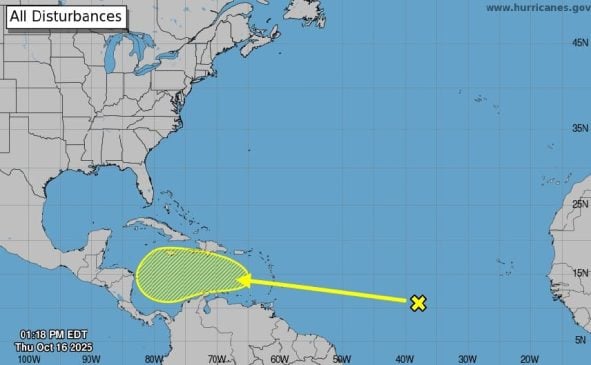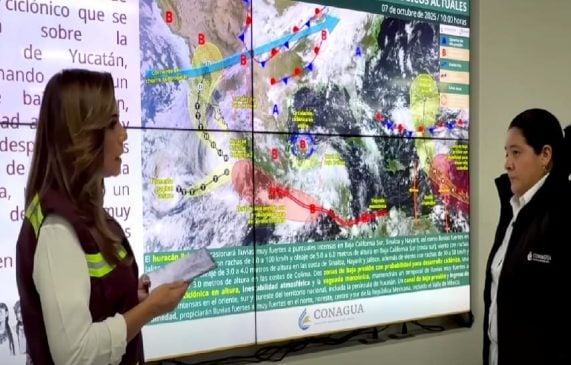Riviera Maya, Q.R. — Tropical Storm Erin has gained hurricane strength, making it the first of the 2025 Atlantic season. Now Hurricane Erin is a category 1 that is forecast to take on major hurricane status in coming days. Forecasters predict that between Saturday night and Sunday morning, Erin will have gained category 3 hurricane status.
However, Mexico’s Servicio Meteorológico Nacional (SMN) forecasts Erin to become a category 4 hurricane around that same time and hold that status until early next week, Tuesday, when it is expected to lose strength and downgrade to a category 3 as it travels north.
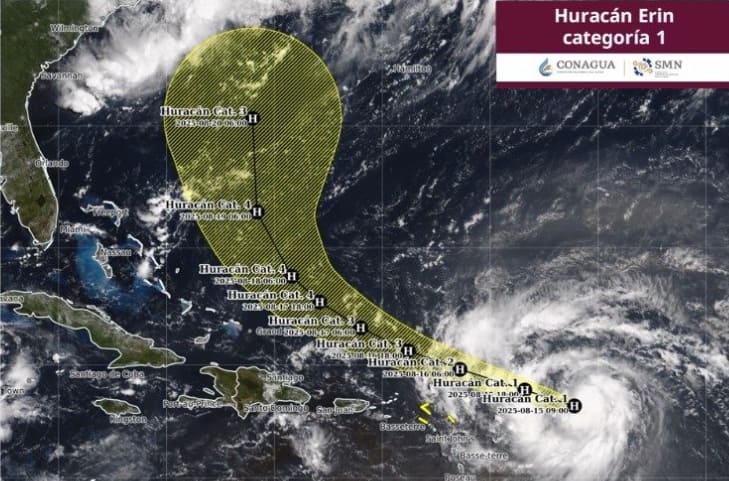
According to the latest from the National Hurricane Centre, a tropical storm watch is currently in effect for Anguilla and Barbuda, St. Martin and St. Barthelemy, Saba and St. Eustatius and Sint Maarten.
“Interests elsewhere in the northern Leeward Islands, Virgin Islands and Puerto Rico should monitor the progress of Erin,” they reported Friday.
“At 1100 AM AST (1500 UTC), the center of Hurricane Erin was moving toward the west-northwest near 18 mph (30 km/h). This motion is expected to continue into the weekend. On the forecast track, the center of Erin is likely to move near or just north of the northern Leeward Islands over the weekend.
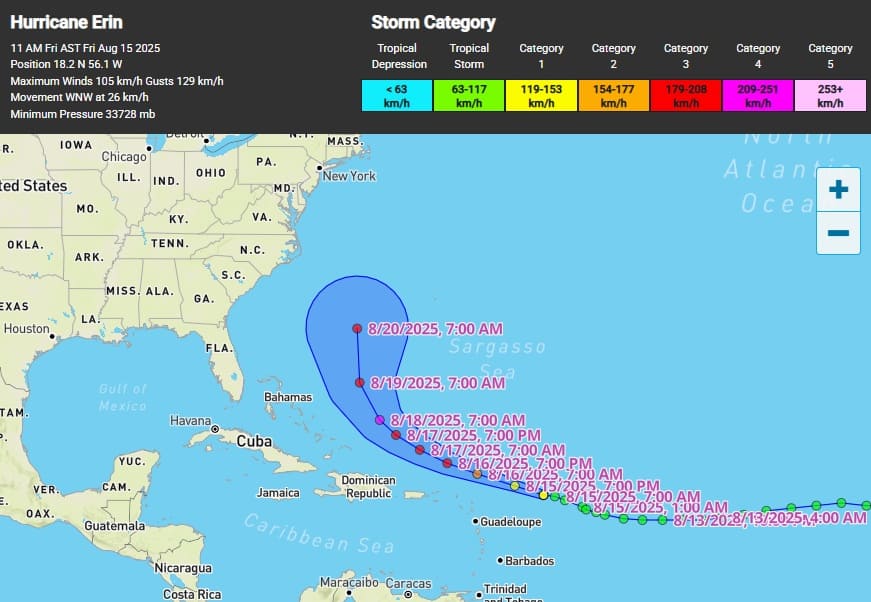
“Reports from NOAA and Air Force Reserve Hurricane Hunter aircraft indicate that maximum sustained winds have increased to near 75 mph (120 km/h) with higher gusts.

“Steady to rapid strengthening is expected during the next two to three days, and Erin is forecast to become a major hurricane during the weekend. Hurricane-force winds extend outward up to 25 miles (35 km) from the enter and tropical-storm-force winds extend outward up to 115 miles (185 km) mainly to the north of the center,” they reported.
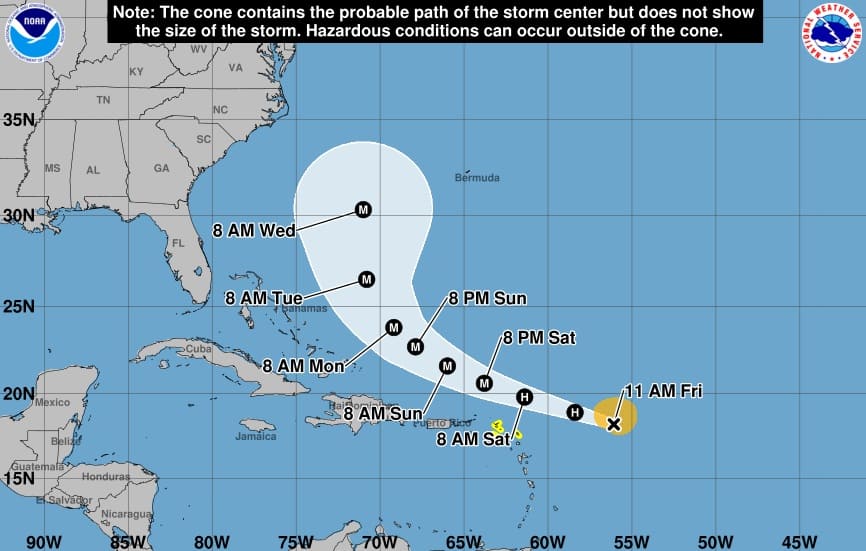
The latest update from the NOAA says while the threat of a direct impact on the eastern U.S. by Erin as a major hurricane seems to be gradually decreasing, there is still “significant risk” of dangerous rip currents and surf along Atlantic beaches.
